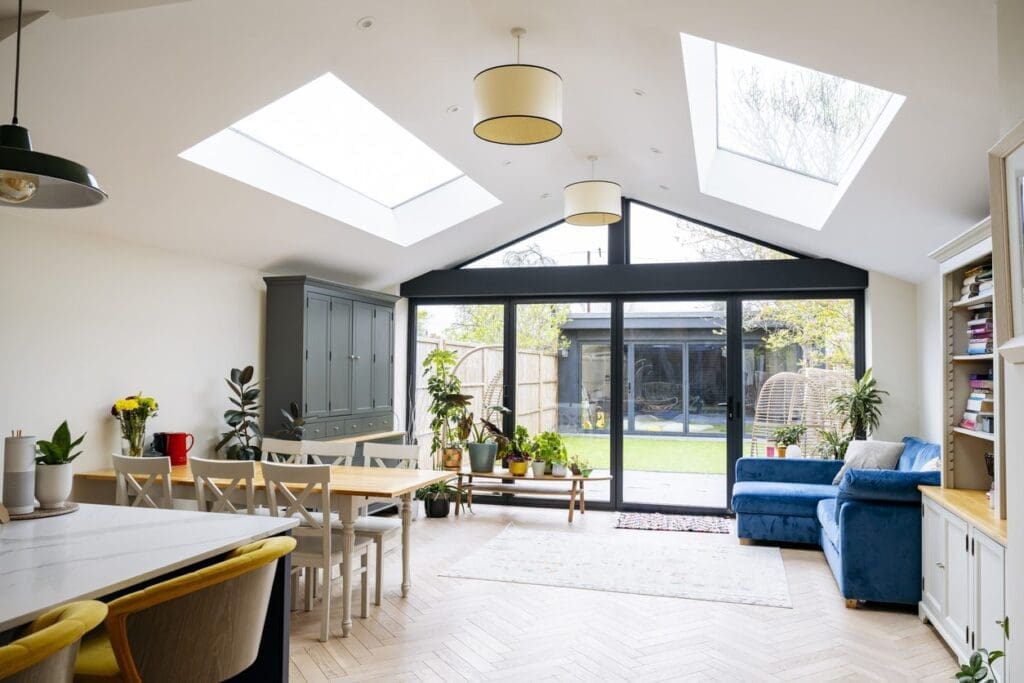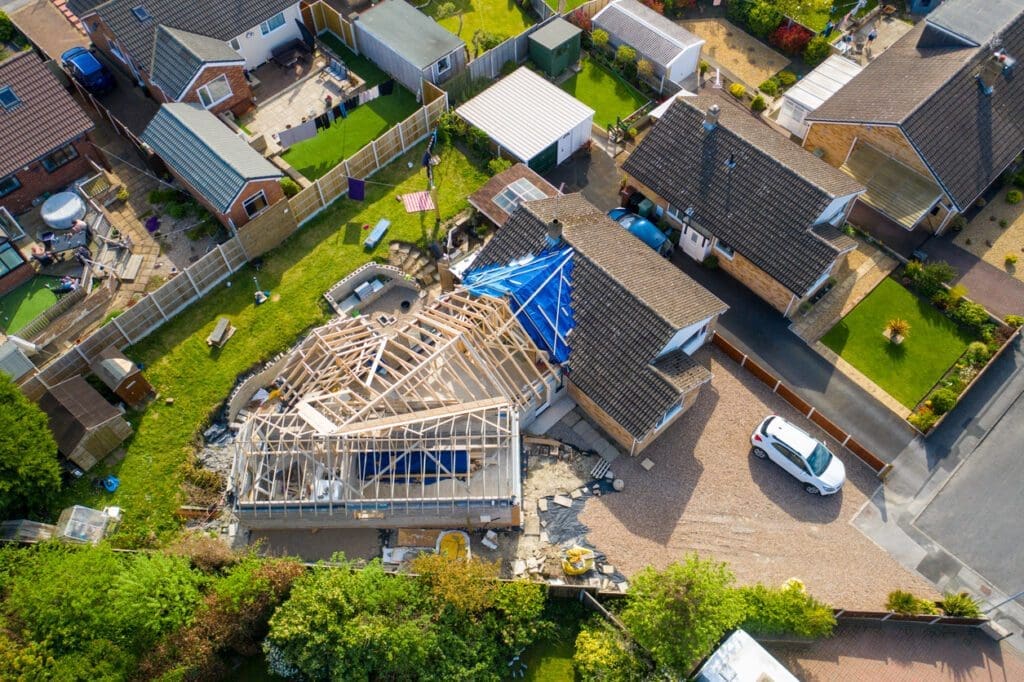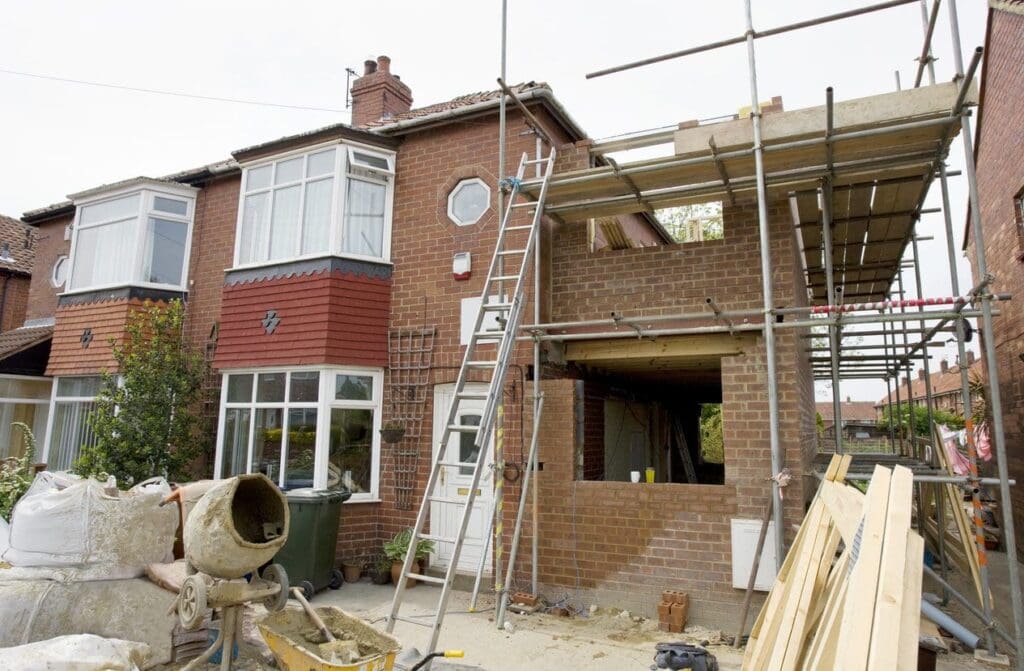Home extensions can transform your living space while potentially increasing property value. This guide covers the planning process, permission requirements, costs, and design considerations to help you successfully extend your home.
Depending on the size of extension, you may need to submit a planning application. The process typically takes 8-12 weeks, with costs varying based on size and complexity. Building Regulations approval is also required to ensure your extension meets building standards.
Planning application requirements
The need for a planning application depends on your extension’s size and your property type. Larger extensions may need an application for planning permission to be submitted to your local authority.
Key point – Permitted Development Rights allow some smaller extensions without the need for a planning application, but size limits and other restrictions apply.
Permitted Development Rights typically allow:
- Single-storey rear extensions up to 4m from the original house (detached) or 3m (semi-detached)
- Side extensions up to half the width of the original house
- Extensions no higher than the existing property
These rights don’t apply if:
- Your property is listed
- You live in a conservation area
- Previous extensions have used up your allowance
Always check with your local planning authority before starting work, as regulations change and local restrictions may apply.
Mythbuster – It’s a common misconception that Permitted Development Rights mean you don’t ‘need’ planning permission for certain extensions. In fact, Permitted Development Rights are grants of planning permission at a national level in Statute, which means you don’t need to apply to your local planning authority.
Getting Building Regulations approval
All extensions need Building Regulations approval, even if a planning application isn’t required. This ensures your extension is structurally sound, energy efficient and safe. Building Regulations cover:
| Area | Requirements |
|---|---|
| Structural safety | Foundations, walls and roof must meet load-bearing standards |
| Fire safety | Materials, escape routes and fire resistance measures |
| Energy efficiency | Insulation, glazing and heating systems must meet current standards |
| Ventilation | Adequate air flow in all rooms, especially kitchens and bathrooms |
You can apply through your local authority building control department or an approved inspector. They’ll inspect work at key stages and issue a completion certificate when finished.
Costs and budgeting
Extension costs vary widely based on size, specification and location. A basic single-storey extension typically costs £1,200-£1,800 per square metre, while a two-storey extension costs £1,800-£2,500 per square metre.
Your budget should include:
| Cost element | Typical proportion |
|---|---|
| Construction costs | 65-75% of total budget |
| Professional fees | 10-15% (architect, structural engineer, surveyor) |
| Planning and Building Regulations | 1-2% |
| Contingency | 10-20% for unexpected issues |
Add extra for kitchen or bathroom fittings if your extension includes these rooms, as they significantly increase costs.
Design considerations
Good design ensures your extension enhances your home’s value and functionality.
Consider:
- How the extension will connect to existing rooms
- Natural light through windows, skylights or glazed doors
- The impact on your garden space
- Whether the style matches or contrasts with your existing property
Key point – Extensions that blend well with the original property and maintain good proportions typically add more value.
Single-storey extensions often work well for kitchen-diners or living spaces, while two-storey extensions can provide additional bedrooms and bathrooms.
Finding professionals
You’ll need several professionals throughout your extension project:
| Professional | Role |
|---|---|
| Architect or architectural technologist | Designs the extension and can help with planning permission |
| Structural engineer | Calculates load-bearing requirements for foundations and support |
| Builder | Constructs the extension according to approved plans |
| Building control officer | Inspects work to ensure it meets Building Regulations |
Get at least three quotes for each service and check references. Ask to see previous extension projects they’ve completed.
Impact on property value
Well-designed extensions can add substantial value to your property, but this varies by location and extension type.
Extensions that add the most value include:
- Kitchen extensions or kitchen-diners
- Extra bedrooms with en-suite bathrooms
- Additional living space that opens to the garden
To maximise value, ensure the extension is proportionate to your property and garden size. Very large extensions that overwhelm the plot can actually reduce appeal.
Timeline planning
A typical extension project follows this timeline:
- Design and planning phase: 2-3 months
- Planning permission: 8-12 weeks
- Building Regulations approval: 5-8 weeks
- Construction: 3-6 months depending on size
Allow extra time for unexpected delays, especially with planning applications which may require amendments.
An extension project typically takes 6-12 months from initial concept to completion.
Final thoughts
Home extensions offer an excellent way to gain space without moving. Plan carefully, follow regulations, and work with qualified professionals to ensure your extension meets your needs and adds value to your property.
Before starting, visit your local authority’s planning portal to check specific local requirements that may affect your project.






